Holographic technology originated in the 1940s. The British scientist Gaya had obtained the hologram and its reconstructed image for the first time, which laid the foundation for the development of holography. The emergence of lasers after more than ten years has provided coherent light sources for holography. Laser holography has been rapidly developed and widely used. Laser holographic technology was introduced into China from the 1980s and developed in the field of anti-counterfeiting. In the 90's, laser holographic anti-counterfeiting was the heyday. The most widely used laser holographic image is laser rainbow molded hologram. The related technical principle of laser rainbow molded hologram is discussed below.
First, laser holographic technology
The most widely used laser holography technology is used to make rainbow holograms. The production process is completed in three stages, namely laser hologram mastering, electroformed metal stamping, and rainbow hologram embossed replication. Here, we briefly introduce these three phases.
1, the principle of laser holography
Laser holography refers to the method of laser interferometry to record the image information of the object we need on the photographic carrier, and then processes the formation of a rainbow hologram that can be reproduced under visible light through techniques such as diffraction of light. Simply put, laser holography is interference recording and diffraction reproduction.
The laser beam with good coherence emitted by the interference recording laser is divided into two beams by a beam splitter. A beam of light is referred to as a reference beam, and is irradiated on a photosensitive carrier (generally a photoresist) after passing through a mirror and a beam expander. (a photoresist version of the agent); another beam of light is called object light and is irradiated on the object after passing through the optics. The object light reflected by the object carries the light information of the object and meets the reference light on the photosensitive carrier. Interference fringes are formed on the photosensitive carrier. This interference fringe records all the information we have photographed, including light intensity information and phase information. This photoreceptor has undergone development and fixation. This is a laser hologram that we photographed. This photo is invisible under normal lighting, and the holographic image can only be seen under the irradiation of a laser reference beam. If you want to enjoy a beautiful hologram even under normal light conditions, you must perform the second shooting process, namely diffraction.
The light emitted by the diffraction reproducing laser is split into two, and a reproducing beam (that is, a secondarily shot object beam) is irradiated on the laser hologram obtained in the first step, and a horizontal slit is placed in front of the laser hologram. The baffle, the beam of light transmitted through the laser hologram passes through the slit, shines on another new photoreceptor carrier, and records the optical information of the laser hologram; another reference light meets the reproduction light in the new On the photosensitive carrier, interference fringes containing optical information are also formed. The hologram obtained after the exposed photosensitive carrier undergoes development, fixation, and the like is a rainbow hologram that can be directly enjoyed under an ordinary light source.
In order to obtain high quality rainbow holograms, we must meet three conditions in our hologram: first, use a coherent light source, the laser is such a coherent light source, and secondly, the image light and the reference light The smaller the optical path difference, the better. The intensity of the two beams is generally controlled between 1:1 and 1:10. The angle between the two beams is generally controlled between 30° and 60° to change the two beams of light. Angle, you can get different colors of the image; Third, the camera system and the environment must be stable, lasers, optical lenses, objects, photographic carriers should be fixed on a shock-proof platform, if the air-cushion shock platform is better, take pictures During the period in which photographs should be taken to avoid changes in indoor air flow and temperature differences, a certain depth of anti-shock trenches should be dug around the photo room to prevent changes in the light path caused by external environmental vibrations.
The rainbow holograms thus obtained cannot be reproduced in large quantities, and in the industrial production, the molding process is introduced to carry out mass copying. Before molding, we must prepare more molds. We call these molds, and the process of making them is called electroforming.
2, electroforming mold metal plate process
The laser hologram is a photoresist plate with a rainbow hologram on the surface (glass plate-based photoreceptor). Microscopically, it is an embossed groove with light intensity and phase information of the object. To copy it is to completely copy the same or opposite groove. This process is completed in two phases:
First, the graphic information (relief grooves) on the photoresist plate is copied onto a metallic nickel plate. This process is divided into four steps: (1) The surface of the photoresist plate is cleaned. In order to successfully complete the silver mirror reaction and secure the silver layer, it is necessary to remove the oil stains and impurities on the surface of the photoresist layer. Since the photoresist (photoresist) is easily dissolved in an alkaline environment, neutrality must be used. Clean the detergent and rinse it with ion-free water. (2) Photoresponsive surface sensitization treatment. The surface of the photoresist is treated with a solution of stannous chloride to form a uniform distribution of stannous ions on the surface. These stannous ions are the reaction centers in the silver mirror reaction. (3) The silver mirror reaction on the surface of the photoresist plate, that is, the surface of the photoresist plate is chemically plated with a fine and uniform layer of silver (3 to 5 μm) to metalize the surface, which can be used as the next step in electroforming. The electrode. (4) Electroforming replication. A metallized photoresist plate is placed in an electroforming cell as a cathode in an electrochemical reaction, a metallic nickel block is used as an anode, and an electroforming solution is generally nickel sulfamate. After a certain period of reaction, a metal is formed on the surface of the cathode. In the nickel version, this nickel plate is closely coupled with the photoresist plate. The grooves and grooves are exactly the opposite. After stripping, this is a stamping master plate completely opposite to the photoresist plate.
Second, copy more stamped worksheets from the stamp master. This process is also performed in the electroforming cell. Before the master is inserted into the cell, a surface passivation treatment is performed. This is to form a layer of concentrated sulfuric acid or potassium dichromate solution on the surface of the master, which is poured or bubbled for a certain period of time. Oxide facilitates stripping of the submaster and master after electroforming. In this way, you can continue to copy the molded version. We will eventually use the moulded press directly for the moulded work plate. The other metal plates prepared for the moulded work are collectively referred to as the mould master. The stamped master is made in a soft groove, and the duplicated working plate is made in a hard groove to which a hardness agent has been added.
3, molding process of replication
The main production equipment of the moulding process is a round high-speed holographic mould press. The press working plate was fixed on the plate roller of the press machine by means of a jig, and the embossed hologram on the press plate was transferred to the PET film by means of heating and pressurization. This completes mass reproduction of the rainbow hologram. In order to enhance the diffraction effect of the rainbow hologram, it can be pre-plated or post-plated with an aluminum film. After molding, generally after coating, compounding, die-cutting and other post-processing.
Second, the application of laser holography
In China, the largest application of laser holography is the use of laser holographic anti-counterfeiting labels in the field of anti-counterfeiting. Laser holographic anti-counterfeit labels have played a significant role in protecting the health and interests of consumers in their continuous development from scratch. Laser holographic anti-counterfeiting labels mainly have three different types of labels.
1. Permanent type This type of laser holographic anti-counterfeiting label uses a permanent PET material as a carrier for anti-counterfeiting labels. When used, the label is directly attached to the surface of the material to be touched, which is convenient to use and is suitable for automatic labeling by machinery. Its main disadvantage is that the logo can be used repeatedly and can be peeled off from the surface of the object to be attached to the surface of other objects, thus affecting the anti-counterfeiting effect. In response to this problem, Hubei Chenguang Industrial Co., Ltd. took the lead in the development of a new type of laser anti-counterfeiting composite packaging technology, which is to use a self-developed automatic labeling system for permanent laser holographic anti-counterfeit labels, and accurately paste it into the product multilayer packaging material sandwich At a specific location, the multi-layer package and the laser holographic anti-counterfeiting label are tightly integrated into a whole. This technology effectively improves the anti-counterfeiting performance of the laser holographic anti-counterfeiting labels.
2, a type of this type of laser holographic anti-counterfeit labels have a similar place with the permanent type, the difference is that it is a one-time PET material as a carrier, after being peeled off the surface, the laser holographic image is destroyed, can not When used again, this damage can be irregular, or it can be destroyed according to the rules designed first.
3, hot stamping type This type of laser holographic anti-counterfeit labeling is to transfer the image information on the PET carrier completely to the surface of the attached object by means of hot pressing, so it cannot be peeled off; moreover, the production process of this mark is It is much more complicated and the requirements are much stricter. Enterprises that do not have certain economic strength and technical strength cannot produce. Hot stamping laser holographic anti-counterfeiting labels can also be divided into three types: general version of hot stamping, special version of hot stamping, special version positioning hot stamping.
Third, the development trend of laser holographic technology
It is undeniable that laser holographic anti-counterfeiting labels have also been imitated in large quantities during use, and they can even be confusing. This has brought huge losses to consumers, companies and manufacturers. For our practitioners, this is both pressure and motivation. In the fight against counterfeiting, we have also developed many new technologies, new equipment, and new processes. In particular, the new platemaking technology has made great progress. From the initial platform photography technology to the later computer holographic dot matrix technology, the computer hologram technology of Hubei Chenguang has emerged. More and more laser holographic anti-counterfeiting technologies have been developed one after another, such as laser encryption technology, computer code encryption technology, text and image microfilm technology, true color three-dimensional technology, computer OVD optical variable technology, and integration with other aspects of anti-counterfeiting technology. Anti-counterfeiting technology and so on. At the same time, the development direction of the continuous innovation of laser holographic anti-counterfeiting technology combined with paper printing and packaging materials is also our future progress.
Laser Cut Fence Screen Panels are the ideal screen to hide an unsightly neighbor`s backyard, to block unwanted direct sunlight, create privacy or to frame an outdoor room. All our outdoor Fence Screen Panels are of the highest quality and designed to resist corrosion through all seasons. Our outdoor screens are robust, yet lightweight and are protected by a robust and scratch-resistant powder coat, ensuring that they will stand the test of time in both commercial and residential settings.
Features a sturdy and attractive frame for a great look and easy installation
Ready to use, no sealing, painting or maintenance required
Mounts on gates, fences, walls and free-standing frames
Resistant to water, mold, mildew and termites
The color of the Fence Screen Panels can be freely assigned, with bright colors, smooth surface, high strength, strong toughness, corrosion resistance, antistatic, no fading, no cracking, etc.
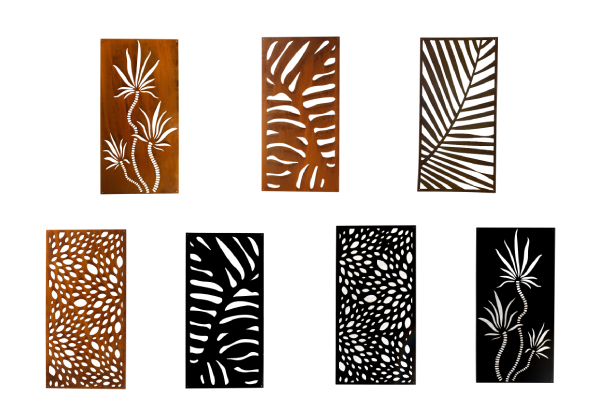
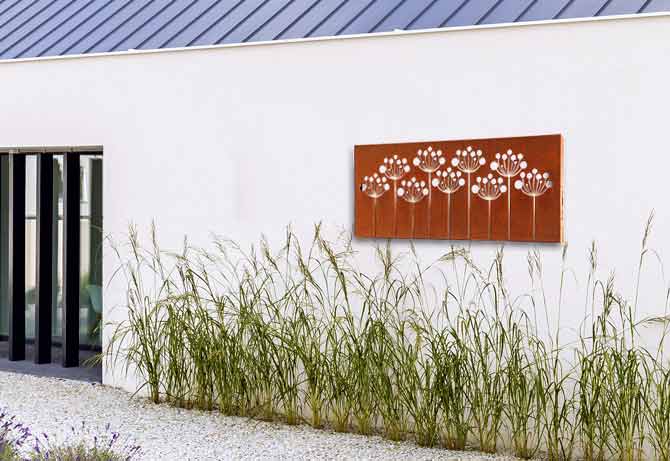
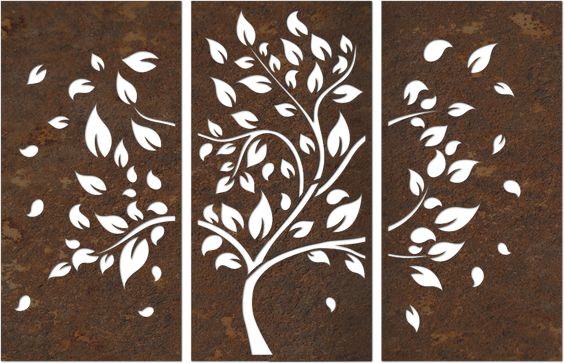

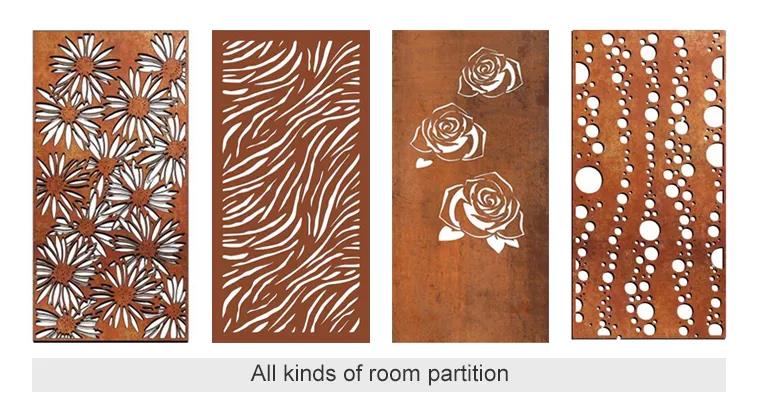
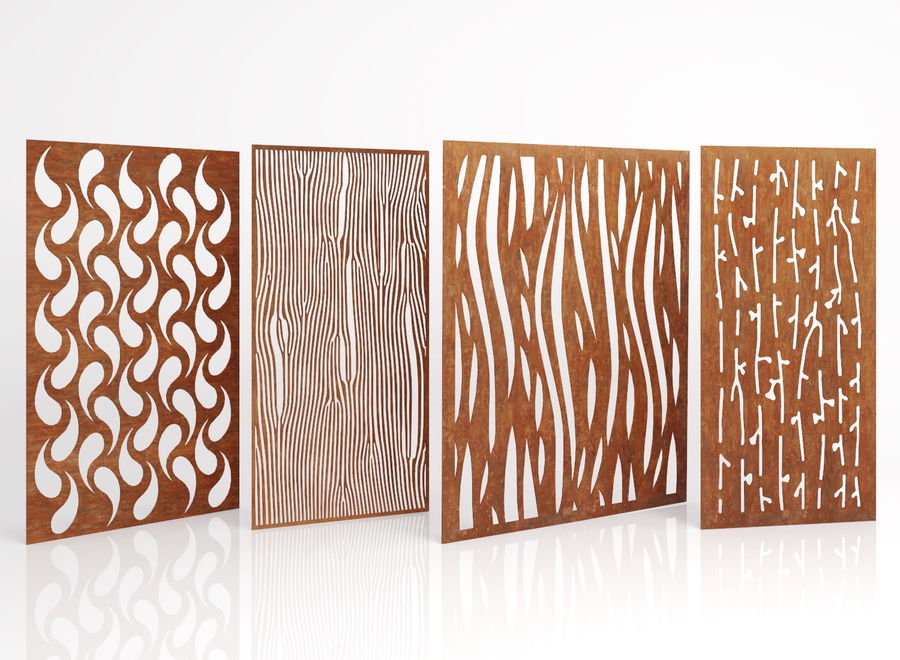
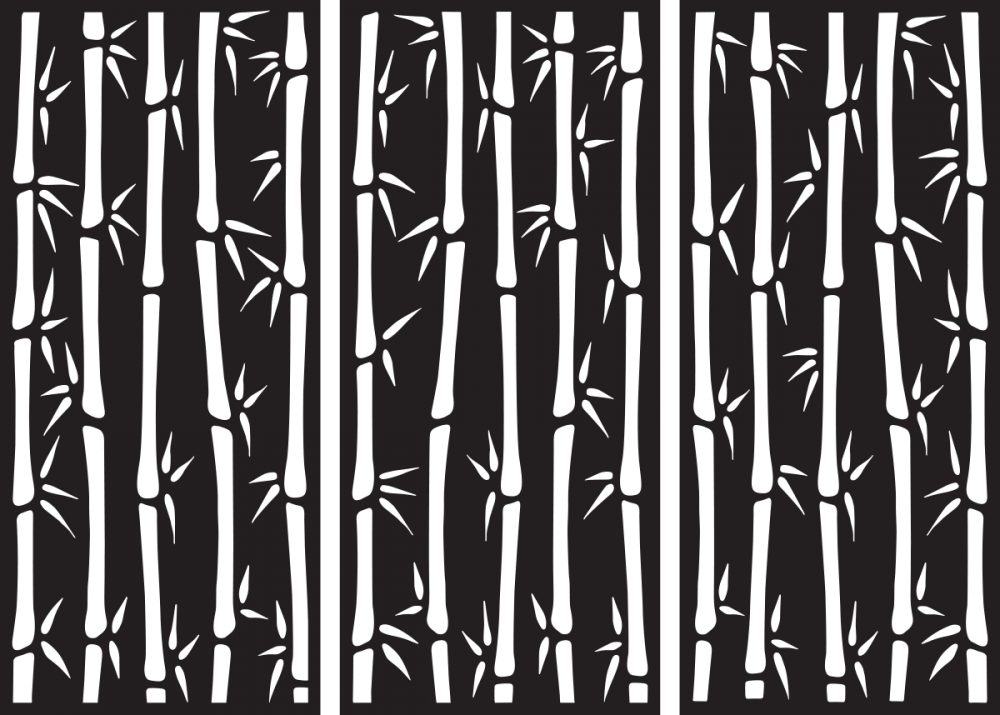
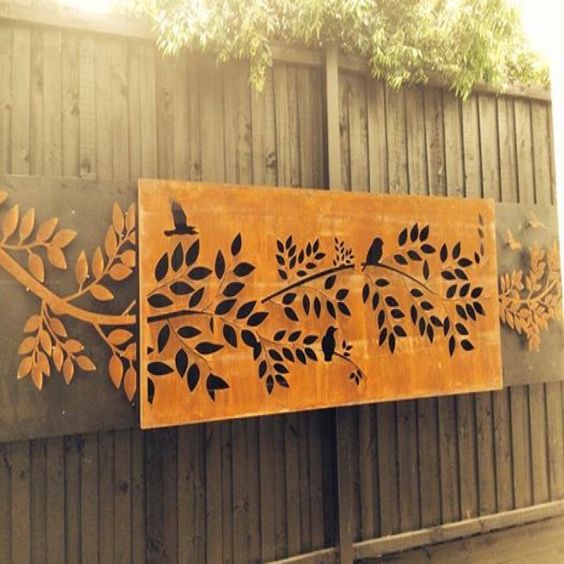
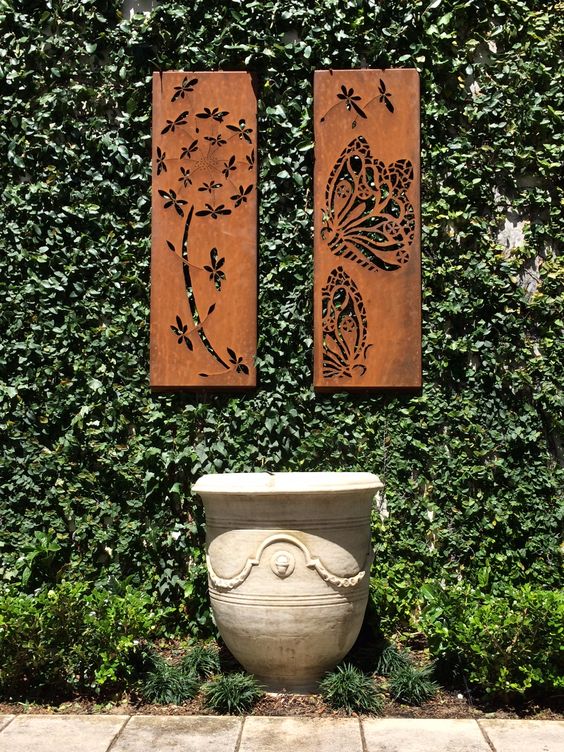
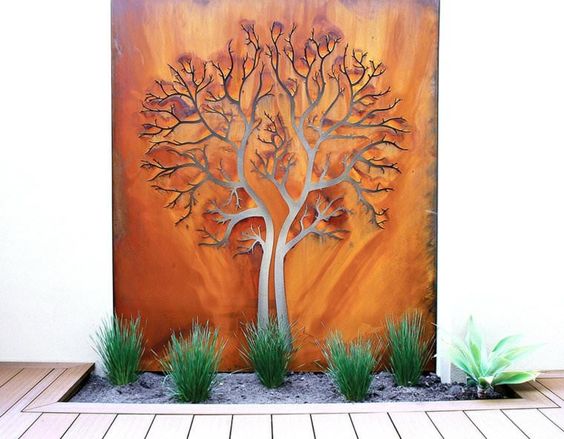
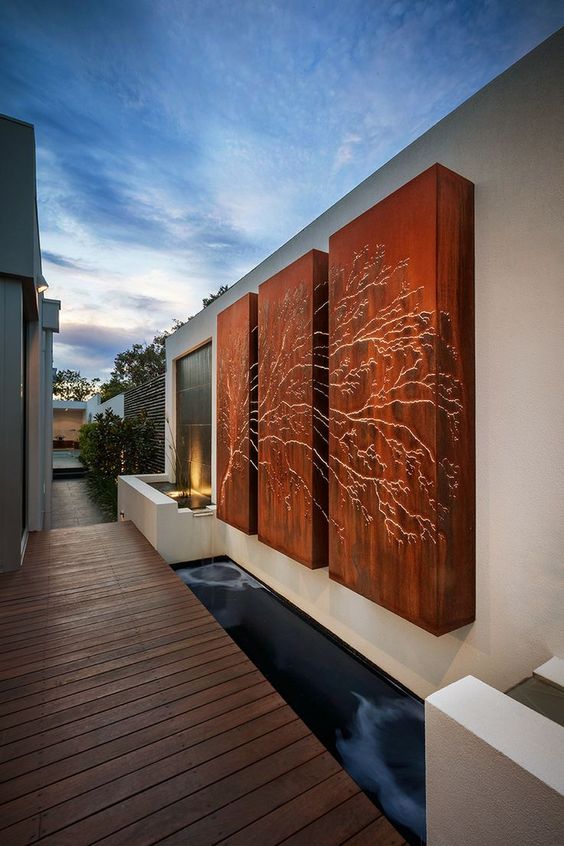

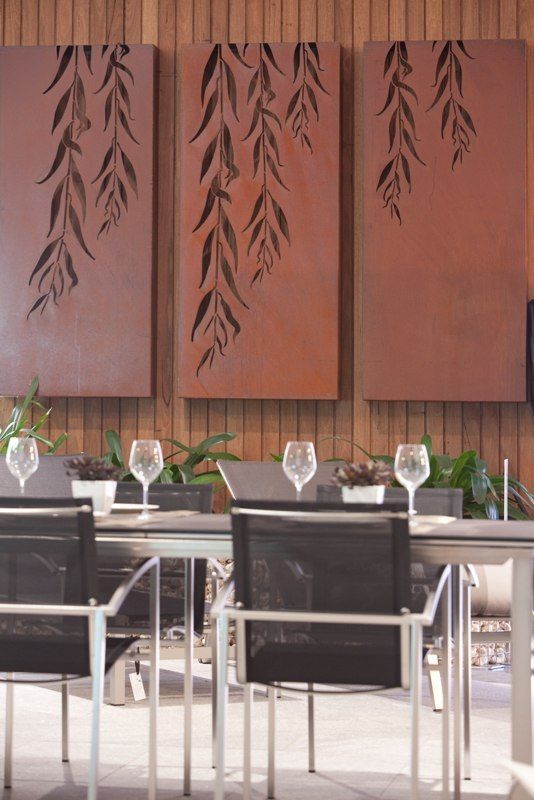
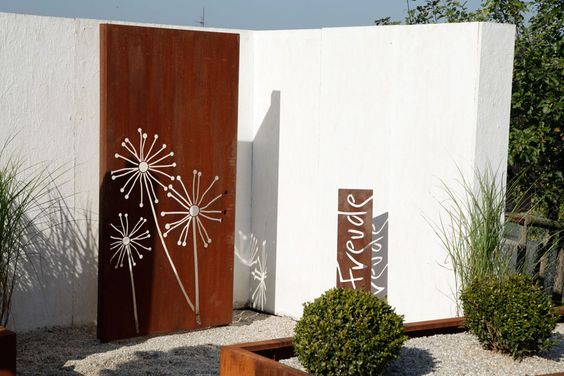
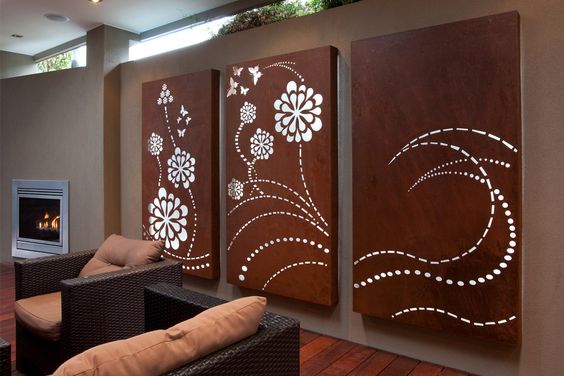

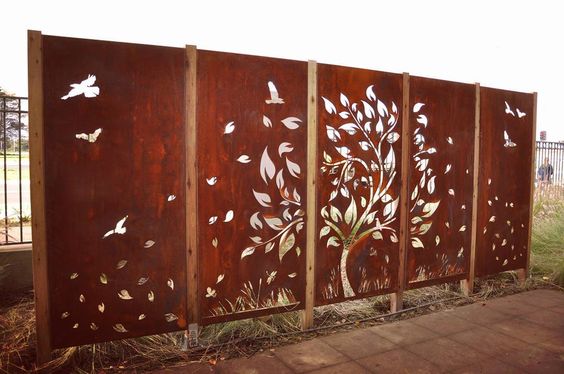
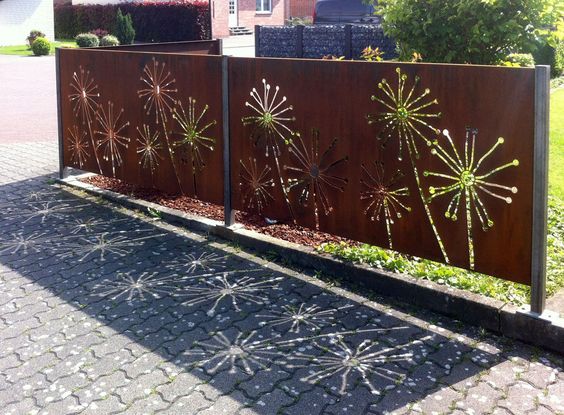
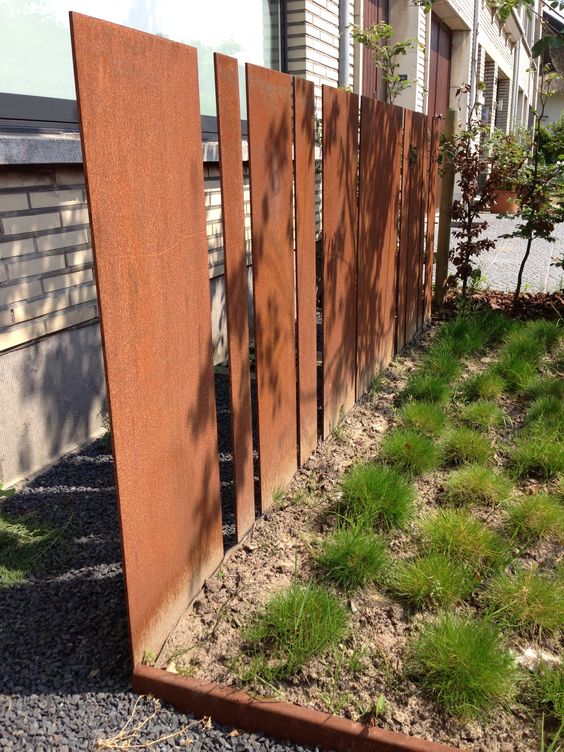
Fence Screen Panels,Willow fence screen,Cheap metal garden screens
Henan Jinbailai Industrial Co.,Ltd , https://www.hnjblbbq.com
